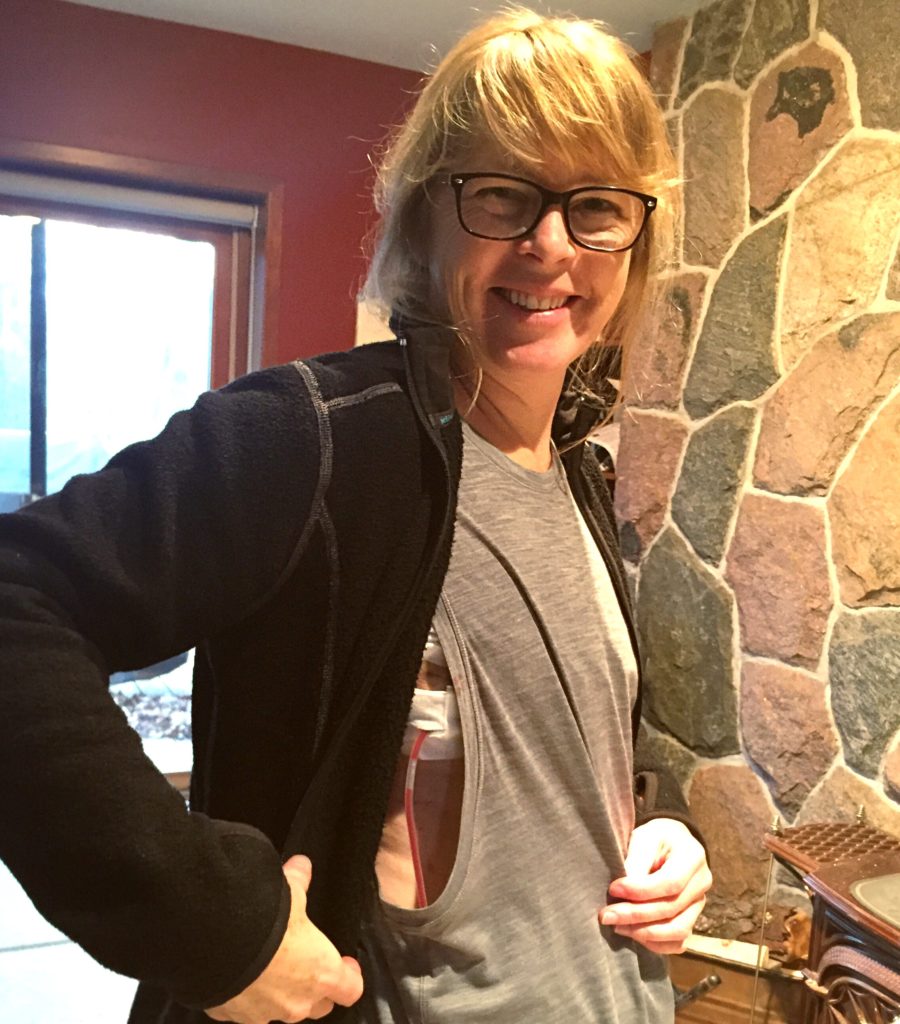It seems that when they take a pound of flesh, they must leave a drain. I have two.
What are drains? I will tell you. Drains are the collection agency for my chest wall fluids. I find them to be somewhat fascinating. If you don’t, you may want to stop reading.
As I was saying, drains are like highways for all that must not remain. The drains in me are soft plastic tubes that are inserted into either side of my chest wall. Of course you can’t just have a drain springing out of your chest, it must be sewn into place (yes, that’s correct, note the thread).
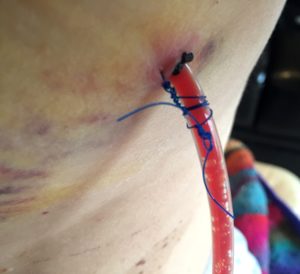
They work similar to a sprinkler system – but reversed. Where the tube goes into the chest wall, it changes into a flattened version of itself, with holes for the pools of blood to enter. (The nurse told me this info so I must believe her … although she’s taking them out tomorrow so I can check for myself.) The fluids then travel into the tube and make their way down down down to a plastic bulb that holds up to 100 cc of fluid.
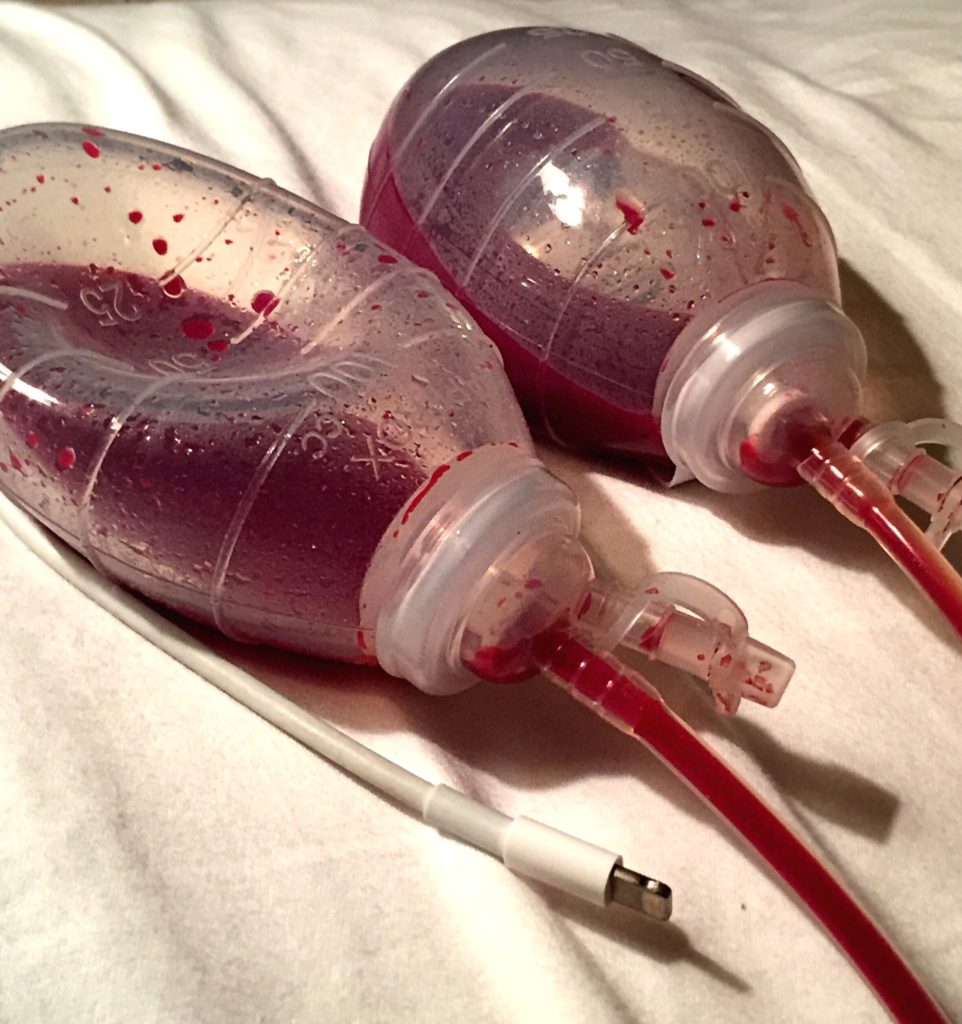

As you can see by the above photo, the bulbs at the bottom can be pinned to your pants or shoved in an inner jacket pocket. The tubes hang around looking for things to snag on so that you can swear regularly. It’s their job. Best to tuck the drain tubes away.
Every 24 hours (or more often if they get heavy) you have to empty the bulbs, measure the fluid and record it. I will get my drains out once they produce less than 30 cc in a 24 hour period. After draining the bulb you must squeeze all the air out of it before you re-cap it. The suction in the bulb literally pulls the fluid out of the chest wall. Cool!
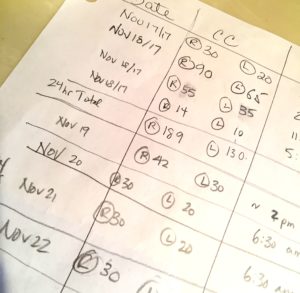
Once in a while the fluids stop moving – a clot forms at the beginning of the drain and it needs to be persuaded to move down to the bulb. So you have to hold the top of the tube still (very important) and pull the clot down to the tube. It’s a process called milking. Takes a bit of time and can cramp up the shoulder as it’s a bit awkward.

The drain site is covered with gauze and taped. The nurses use 4″x4″ gauze and a swath of tape (note the above photo). They don’t seem to give a shit that it hurts like hell to pull off the bandages – especially under the armpits. I felt compelled to amend the situation and make my own mini version.
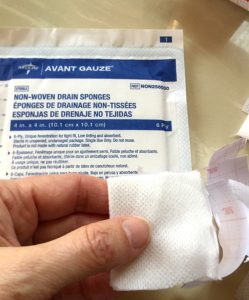
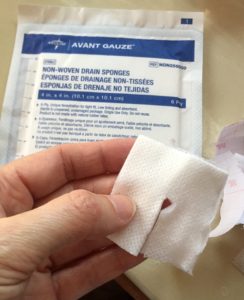
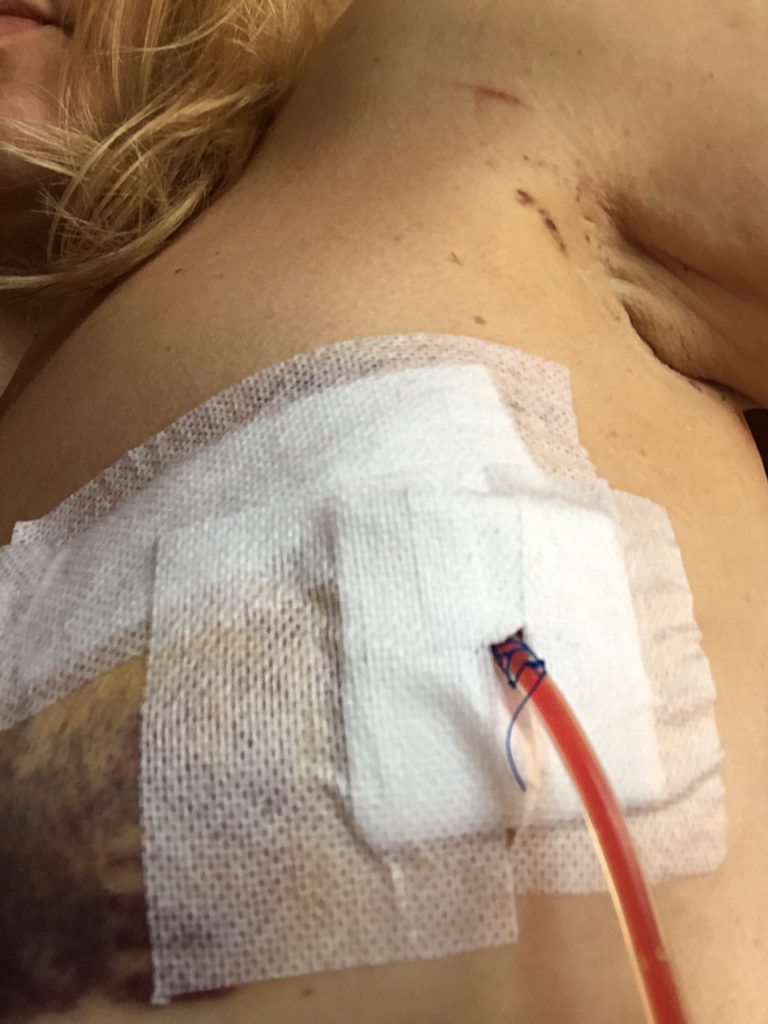
The drain gauze is taped neatly, overlapping a long strip of gauze that is keeping the staples and incision protected. (Staples? They’re a topic for another day.) And that’s all you need to know about drains.
Oh, and good for you for being brave and reading the entire post. Are you a fan of Grey’s? ER? Oh ya!!! Push the epi!
